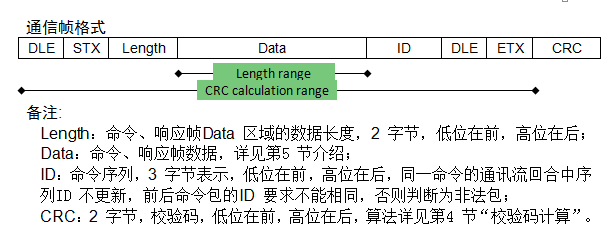前面,我们讲述了一个带有包尾的数据协议包的解码过程,这种协议就已经被LengthFieldBasedFrameDecoder类能解决的数据协议复杂得多。其协议如下所示:

带包尾的数据协议包
但还有更复杂的,我们遇到的,就是在上述协议的基础上,再增加三种不同于上述协议的协议,如下所示:

数据协议示例
带包尾的数据协议,我们已经通过CashboxDataLengthFieldBasedFrameDecoder得到了解码。但增加了上面三个简单协议后,我们就不能只使用CashboxDataLengthFieldBasedFrameDecoder得到解决。
那该怎么解决呢?
顺理成章的思路就是:我们做一个总的粘包拆包解码器,遇到ACK等上述三种简单协议就单独解决,其他的数据协议,走CashboxDataLengthFieldBasedFrameDecoder类解决。
我们来看看实际的编码过程:
@Slf4j
public class CashboxVariableFormatDecoder extends CashboxDataLengthFieldBasedFrameDecoder{
我们是在扩展CashboxDataLengthFieldBasedFrameDecoder类的功能的,当然继承该类是一个很好的扩展方法。
private static final int INITIAL_LEN = 5;
ACK等上述三种简单协议的数据长度是5个字节,先定义成常量。
public CashboxVariableFormatDecoder(int maxFrameLength, int lengthFieldOffset, int lengthFieldLength) {
super(maxFrameLength, lengthFieldOffset, lengthFieldLength);
}
public CashboxVariableFormatDecoder(int maxFrameLength, int lengthFieldOffset, int lengthFieldLength, int lengthAdjustment, int initialBytesToStrip) {
super(maxFrameLength, lengthFieldOffset, lengthFieldLength, lengthAdjustment, initialBytesToStrip);
}
public CashboxVariableFormatDecoder(int maxFrameLength, int lengthFieldOffset, int lengthFieldLength, int lengthAdjustment, int initialBytesToStrip, boolean failFast) {
super(maxFrameLength, lengthFieldOffset, lengthFieldLength, lengthAdjustment, initialBytesToStrip, failFast);
}
public CashboxVariableFormatDecoder(ByteOrder byteOrder, int maxFrameLength, int lengthFieldOffset, int lengthFieldLength, int lengthAdjustment, int initialBytesToStrip, boolean failFast) {
super(byteOrder, maxFrameLength, lengthFieldOffset, lengthFieldLength, lengthAdjustment, initialBytesToStrip, failFast);
}
上面是使用了父类的构造器,没什么好说的。
接着重载父类的decode方法:
@Override
protected Object decode(ChannelHandlerContext ctx, ByteBuf in) throws Exception {
如果读到的数据长度不足ACK等上述三种简单协议数据的长度,那么返回等待:
if (in.readableBytes() < INITIAL_LEN) return null;
标记一下当前的readIndex的位置,为重置index做准备:
in.markReaderIndex();
读前两个字节:
byte dle = in.readByte();
byte stx = in.readByte();
如果前两个字节是ACK等上述三种简单协议数据的标识符,则处理成ACK等上述三种简单协议数据:
if (stx == (byte) 6 || stx == (byte) 21)
{
//必须把所有要包装的字节数读完,以保证该字节不会被反复走读。
in.readByte();
in.readByte();
in.readByte();
return in.retainedSlice(0, INITIAL_LEN);
}
处理的结果就是返回前5个字节。
如果不是,则该CashboxDataLengthFieldBasedFrameDecoder类处理了:
else
{
//交给CashboxDataLengthFieldBasedFrameDecoder类包装,所以,已经走读过的字节要退回。
in.resetReaderIndex();
return super.decode(ctx, in);
}
最后,结束整个类的编写:
}
}
以上就是整个解决过程!
